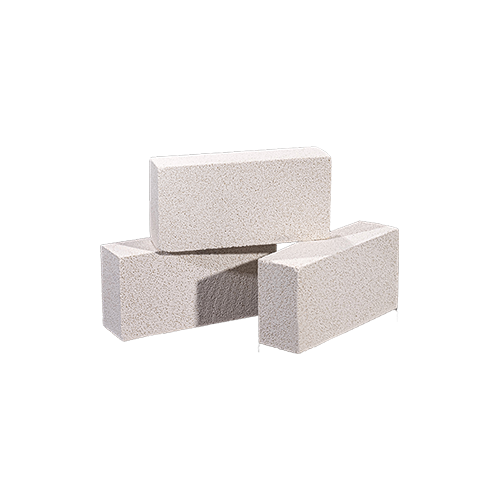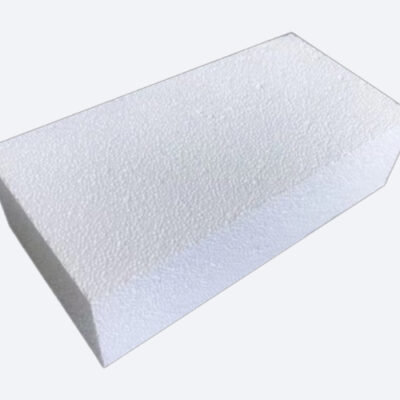Description
High Alumina Lightweight Bricks, also referred to as high alumina insulation bricks, exhibit an alumina content exceeding 48%. The primary crystalline phases present are mullite, corundum, and a glass phase. These bricks have a bulk density ranging from 0.4 to 1.35 g/cm3, with a cold crushing strength spanning 1-8 MPa. They are distinguished by attributes such as elevated service temperatures, minimal impurity content, robust resistance to high temperatures, and commendable heat insulation capabilities.
The production of high alumina insulation bricks generally involves utilizing high-grade bauxite clinker along with a minor proportion of clay. Following meticulous grinding, a gas bubble method or molding technique is employed, typically involving pouring and shaping a mud-like mixture, which is then fired at temperatures ranging from 1300 to 1500 ℃. On occasion, industrial alumina can be employed in lieu of a portion of bauxite clinker. These bricks find application in lining and insulating layers within masonry kilns, as well as in areas that are not subject to intense erosion or exposure to high-temperature molten substances. When in direct contact with flames, the surface temperature remains below 1350 ℃.
| Item | Index | |||||
| LG-1.2 | LG-1.0 | LG-0.8 | LG-0.7 | LG-0.6 | LG-0.5 | |
| Al2O3 % | ≥48 | |||||
| Fe2O3 % | ≤2 | |||||
| Bulk Density g/cm3 | ≤1.2 | ≤1.0 | ≤0.8 | ≤0.7 | ≤0.6 | ≤0.5 |
| Cold Crush Strength,MPa | ≥4.5 | ≥3.5 | ≥2.5 | ≥2.2 | ≥1.6 | ≥1.2 |
| Permanent Linear Change Rate,% | 1400℃×12h ≤-2 |
1350℃×12h ≤-2 |
1250℃×12h ≤-2 |
|||
| Thermal Conductivity W/(m·K) 350±25℃ |
≤0.55 | ≤0.50 | ≤0.35 | ≤0.30 | ≤0.25 | ≤0.20 |



